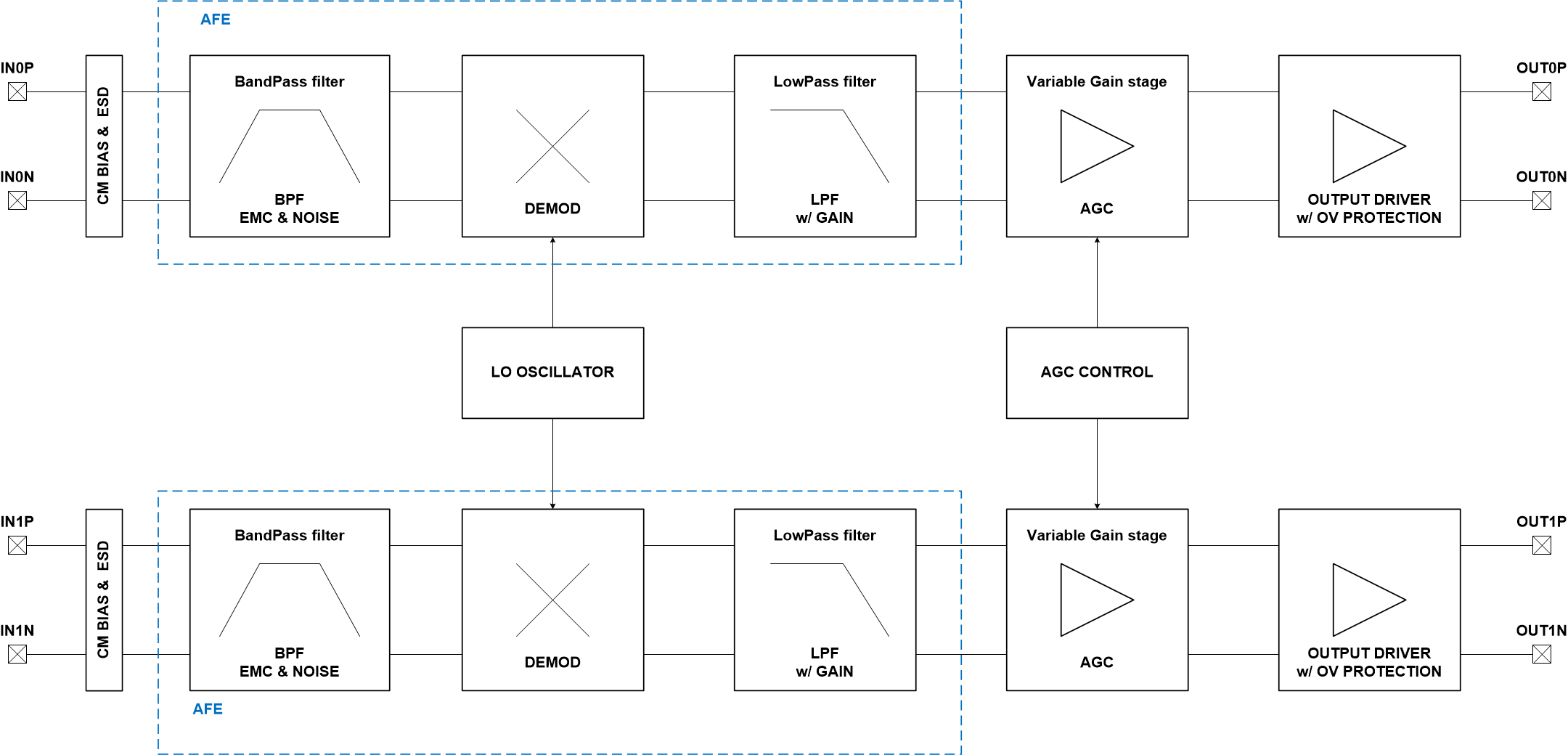SNOSD47C december 2018 – july 2023 LDC5072-Q1
PRODUCTION DATA
- 1
- 1 Features
- 2 Applications
- 3 Description
- 4 Revision History
- 5 Description (cont.)
- 6 Pin Configuration and Functions
- 7 Specifications
- 8 Detailed Description
- 9 Application and Implementation
- 10Power Supply Recommendations
- 11Layout
- 12Device and Documentation Support
- 13Mechanical, Packaging, and Orderable Information
Package Options
Mechanical Data (Package|Pins)
- PW|16
Thermal pad, mechanical data (Package|Pins)
Orderable Information
8.3.3 Signal Processing Block
The inputs to the signal processing block come from the outputs of the receiver coils of the position sensor. This block will demodulate the position signals, filter out noise, and amplify the signal in preparation for angle calculation by an external control unit. The first stage of the signal processing block contains ESD protection circuitry and sets the common-mode voltage. The second stage of this block is an EMC filter to eliminate noise. The next stage of this block is a demodulator for the input signals. This demodulation uses the frequency of the LC oscillator as a reference. The signals will then go through a low-pass filter with fixed gain. The last stage in the signal processing block is a gain stage where the gain is either set by an automatic gain control routine (AGC_EN pin pulled to GND through an external resistor), or set to a fixed gain by the voltage on the AGC_EN pin. The signal path gain for both channels is same and are matched very closely by careful design.
Figure 8-2 shows a block diagram of the analog front-end in the IC that demodulates the incoming signal to extract position information.
 Figure 8-2 Signal Processing Block
Diagram
Figure 8-2 Signal Processing Block
Diagram